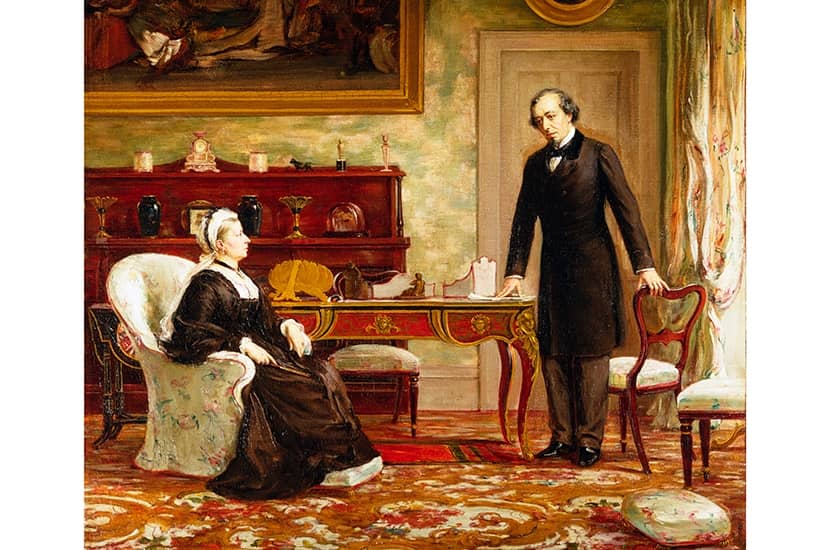This very readable account of relations between the British intelligence services and the Crown does more than it says on the tin. Although subtitled ‘Spying and the Crown, from Victoria to Diana’, it quite properly begins with Queen Elizabeth I and the intelligence network masterminded by Francis Walsingham, whom MI6 regard as their historical progenitor.
It also quite properly makes the point that ‘spies and royal statecraft were episodic and opportunistic partners’. Unlike other major powers, Britain had no permanent intelligence services until 1909. There weren’t even any permanent military intelligence organisations until the late 19th century. Such networks as there were came and went with war, or its threat, their relations with the Crown varying with the personalities of the monarchs and the degree to which they were involved in governance. Our current Queen receives regular intelligence reports and briefings — the authors reckon she ‘probably knows more state secrets than anyone in history’ — though unlike the first Elizabeth she does not control or task her intelligence services. Yet they are, in one sense, hers: their staffs are Crown, not civil, servants.
Elizabeth I was a hands-on and demanding intelligence customer, superbly served by Walsingham and the Cecils; but her successor James I took little interest, despite the just-in-time discovery of the Gunpowder Plot, which could well have killed him. Charles I was similarly dis-inclined, preferring to spend secret funds on propaganda. But Oliver Cromwell and his republicans were more focused and organised. As well as an effective agent network, they established an intercept and decoding capability — a mini GCHQ — which survived until the mid-19th century.

After the Restoration and the 1688 Glorious Revolution, Crown involvement varied with the international situation, with the degree to which the monarch could depend upon his or her private channels and the need for secret funds to cover up royal embarrassments or bribe opponents.
Victoria, however, ‘understood intelligence just as well as her Elizabethan pre-decessor’, and was not only an avid reader of reports but increasingly came to view security foreign policy as her own fiefdom. She could do this because her extensive family connections throughout the Continent meant she was often better informed than her governments — particularly with regard to the growing threat from Bismarckian Germany. While noting that ‘it is a miserable thing to be a constitutional queen, and to be unable to do what is right’, she nonetheless took action. In 1877 she and Disraeli bypassed the Foreign Office in order to warn the Tsar against taking Constantinople. She also prevented British participation in the Prussian-Danish war and accurately predicted the Prussian-Austrian war of 1866.
Stewart Menzies, chief of MI6 in the second world war, was rumoured to be the son of Edward VII
She had other, more personal, motives for intervening in security and foreign affairs. As the century wore on, assassination attempts against rulers, especially royalty, became more frequent and successful. There were no fewer than eight attempts on Victoria’s life, plus one occasion when a man knocked her out with his walking- stick. Although these were generally the work of individuals rather than terrorist groups, and Victoria proved robust, the fact that all her successors have had to live with the threat of murder compels engagement — wanted or not — with intelligence and security.
Edward VII appreciated the growing threat from Germany, influenced the dreadnought battleship programme and saw the foundation of what became MI5 and MI6 in 1909. But perhaps his main cost to secret service funds involved bribes to French newspaper editors not to publish details of his philandering. However, he may have engendered a closer connection between the Crown and the intelligence services than any yet revealed. Stewart Menzies, chief of MI6 in the second world war, was rumoured to be his illegitimate son.
George V comes out better in this account than in most, which tend to patronise him for being a stamp collector. The authors examine in detail the degree to which he was responsible for the murder of the Tsar and his family by opposing their being granted asylum here. Despite observing that ‘George loved his cousin, but not enough to sacrifice his own throne’, they conclude that ‘Tsar Nicholas was the architect of his own fate’. That may be largely true, but no one at the time, the Tsar included, foresaw Bolshevik butchery as the alternative to exile. As for the claim that MI6 ‘almost certainly’ participated in the murder of Rasputin, more evidence is needed.
It appears from this account that the government had early warning of the abdication crisis through an MI5 phone tap on Edward VIII. This was probably a unique monitoring of royal communications, demanded by the government on national security grounds. After the former king moved abroad, his evident approval of Hitler meant that he continued to be monitored by MI6. Meanwhile, Elizabeth, the wife of the new king George VI, took the trouble to read Mein Kampf and suffered no such illusions.
The most dramatic assertion of royal links with intelligence in modern times was the allegation that the late Princess of Wales was murdered by MI6 at the behest of the late Duke of Edinburgh. The authors give this farrago of nonsense the treatment it deserves. Nevertheless, should anything untoward befall the Duke and Duchess of Sussex — God forbid — we may be sure that the online world will pulsate with conspiracy theories. Anyone tempted to believe them should first read this thorough and informed survey of how matters of high state have really worked — and work.






Comments